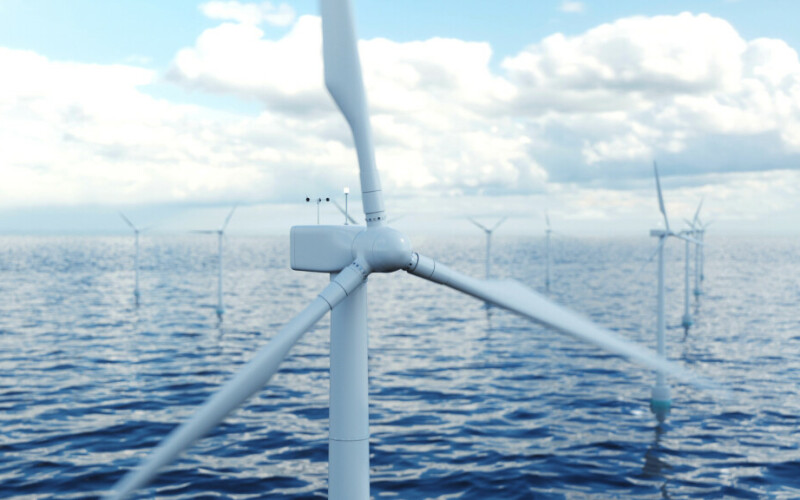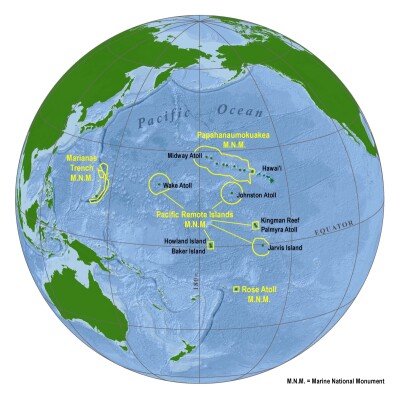After dropping its flagship U.S. project Ocean Wind, Ørsted is seeking to pull back $300 million in obligations to New Jersey.
Once its board of directors had decided to kill the 1,100-megawatt plan on Oct. 31, the next day Ørsted notified the state Board of Public Utilities that it wants to get back a $100 million guarantee that it would complete the project. The company is also pulling back on $200 million it had planned to invest with steel fabricator EEW for its monopile foundation manufacturing plan in Paulsboro, N.J.
Ørsted and state officials signed off on those promises just weeks before the surprise announcement that Ocean Wind 1 and 2 would not be built – a move that Ørsted CEO Mads Nipper said would address more than 70 percent of the company’s recent $2.3 billion writedown of its assets in the beleaguered U.S. offshore wind market.
The guarantees followed the politically fraught move by New Jersey Gov. Phil Murphy and allied Democratic state legislators to give Ørsted federal renewable energy tax credits worth as much as $1 billion that otherwise would go to New Jersey ratepayers. It was an effort to ensure that Ocean Wind – a centerpiece of Murphy’s policy commitment to renewable energy – would be economically viable in the face of escalating costs.
That commitment could prove costly to New Jersey Democrats in the Nov. 7 state legislative elections. Republican legislators made opposition to wind power a key political argument this year, bolstered by local opposition in Shore communities.
Activists there portrayed turbine construction as a threat to the local summer tourism economy and year-round fisheries, evoking opposition from long-established fleets that fish for scallops and surf clams.
Stung by Ørsted’s flip, Murphy has vowed to “fight like hell” to hold the company to its commitments. That dispute appears destined for a court battle.
Other wind power infrastructure investments are in doubt. Days after the Ocean Wind cancellation, construction was continuing at Ørsted’s new operations and maintenance base in Atlantic City, the Press of Atlantic City reported.
But 40 miles to the north, crews had begun demobilizing at a cable connection route in Island Beach State Park, where an export cable for Ocean Wind was to cross the barrier island and under Barnegat Bay to make a connection to the mainland power grid.
In a Nov. 1 earnings call with analysts, Nipper said some Ocean Wind equipment already delivered could be sold for use in other projects.
Moreover, Ørsted still holds its offshore leases from the federal Bureau of Ocean Energy Management – a fact much on the minds of wind power supporters and critics alike.
“Ørsted’s decision to cease construction of Ocean Wind 1 and 2 is shortsighted, but offshore wind development will continue off the New Jersey coast. boosting job growth and improving our environment,” said former state Senate president Steve Sweeney, a longtime wind power booster and advisory board chair of Rowan University’s Sweeney Center for Public Policy.
“Ørsted’s decision to keep its New Jersey offshore wind tracts indicated it is not giving up on developing Ocean Wind 1 and 2 in the future,” said Sweeney in a prepared statement Nov. 1. “The Governor should pursue all remedies to get to keep its original commitment.”
Rowan University officials were working to develop and offshore wind workforce training center, largely on the strength of the potential for new jobs from Ocean Wind 1 and 2. Sweeney said the wind industry still holds promise for New Jersey.
“Six offshore wind developers paid a record $4 billion for leases off the New Jersey coast from Monmouth to Cape May counties last year, and the state Board of Public Utilities is currently considering bids from a wide range of developers to provide electricity generated from offshore wind to New Jersey consumers.”
But the state’s ambitions already face the next challenge with Atlantic Shores, a 50-50 joint venture between Shell New Energies US LLC and EDF Renewables for developing a turbine array off Long Beach Island and Brigantine, N.J., just north of the Ocean Wind leases.
Soon after Ørsted won its increased tax credits last summer, Atlantic Shores Joris Veldhoven warned there was a need for a comprehensive policy approach to help the overall industry cope with inflation, supply chain problems and higher interest rates. In a September interview Veldhoven told the business journal ROI-NJ that Atlantic Shores will need changes to its power agreement with New Jersey by the end of this year.
“As it stands, we cannot compete for financing and provide continued shareholder investment if we don’t adjust our deal to a changed world,” he told the magazine.







